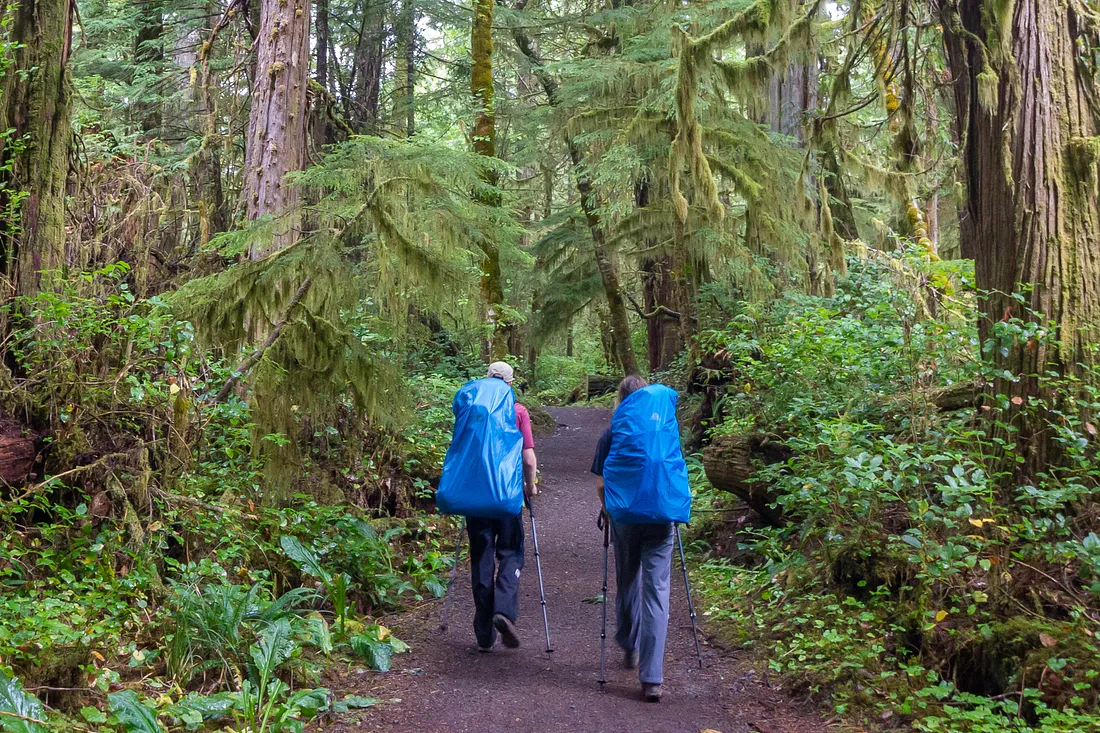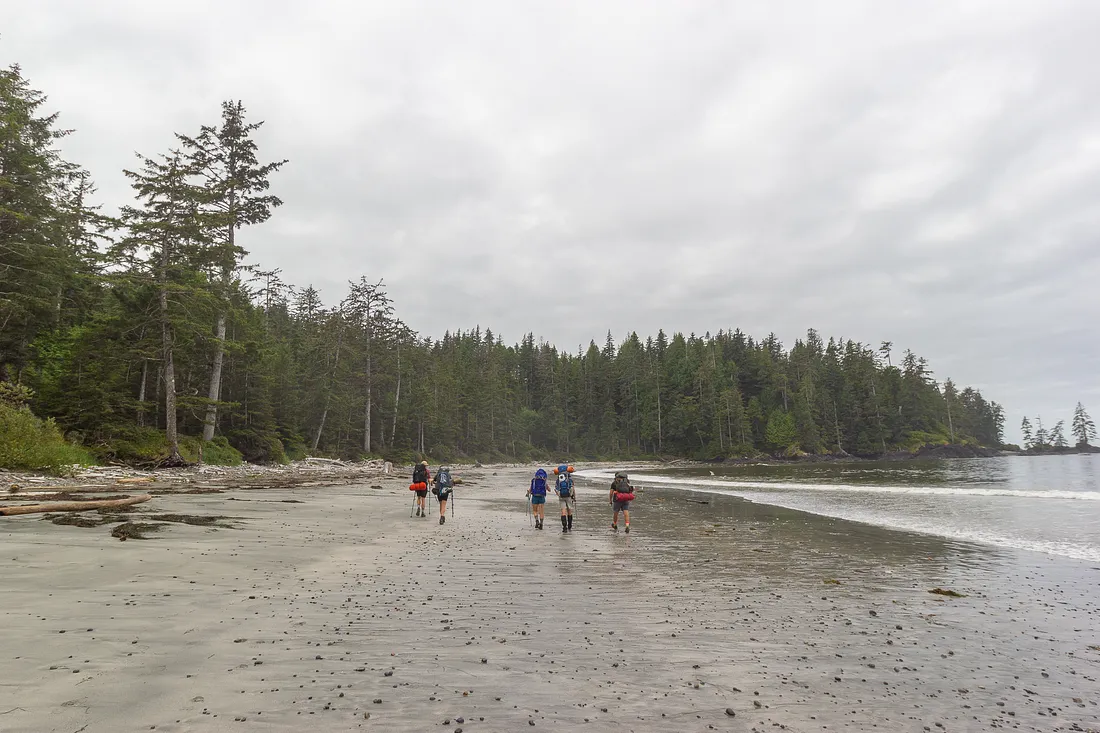Quick heads-up: some of the links on this page are affiliate links. If you make a purchase through them, we may earn a small commission (at no extra cost to you). This small bit of income helps keep our site running.
Do You Need a Backpack Rain Cover

The question of whether or not to buy a backpack rain cover is more about when you'll use it rather than if you'll use it. Here's my advice, based on my own treks through drizzles, downpours, and everything in between.
When a Backpack Rain Cover Makes Sense
Risk of Sudden Showers: If you've ever been miles into a hike or backpacking trip and been caught off guard by a sudden shower out of nowhere, you know the value of a rain cover. Electronics, clothes, and snacks can go from dry to soaked in minutes.
Extended Trips: For multi-day backpacking trips, keeping your gear dry is more about safety than comfort. Wet clothes and sleeping bags can lead to hypothermia and misery in colder temps. So a rain cover is essential.
When You Might Skip It
Short, Predictable Outings: If you're heading out for just a few hours and the weather forecast is clear, you can probably leave the backpack rain cover at home.
Water-Resistant Backpacks: Some backpacks come with built in water resistance that can handle light to moderate rain. If you trust your backpack's material and aren't expecting a much rain, you could can probably go without a rain cover.
Product Picks
Here are a couple of recommendations that I've either had personal experience with, or know someone who has:
- Osprey Ultralight Raincover: This cover is lightweight, durable, and packs down small. It's a great option if you're looking to minimize weight. It fits snugly over various backpack sizes and gives you solid rain protection.
- Sea to Summit Ultra-Sil Pack Cover: Sea to Summit is known for their sil-nylon stuff sacks, and this rain cover is made out of the same tough, waterproof material. It's incredibly lightweight and packs down tiny, making it perfect for those who like their gear ultralight.

Backpacks with Built-In Rain Covers
If you're in the market for a new backpack you might consider buying a backpack that comes with a rain cover. Typically these backpacks have a rain cover that stows away in a small, dedicated pocket at the bottom or top of the pack. The dedicated pocket is nice because you always know where your rain cover is, and it's always accessible.
What's also great about these built in rain covers is that they're guaranteed to fit. Backpack rain covers typically will come in a few sizes, but it's always a bit of a guessing game as to which one will be right for your backpack. With a built in cover you don't have to worry about that.
Product Mention:
- Osprey Atmos AG 65 (womens): Among the many reasons this backpack is a favorite among hikers and backpackers is the included rain cover. If you're considering a backpack with a built in cover, this is a great choice.
How to Put a Rain Cover on a Backpack
Putting a rain cover on your backpack might seem straightforward, but when the rain starts pouring and you've never used the thing before, it can get a bit confusing. Here's what to do:
- Unpack the Cover: Start by removing the cover from where you've stored it. If you’re dealing with wind, make sure to hold onto it tightly so it doesn't flying away. You did pack it somewhere easily accessible right?
- Identify the Front: Most rain covers have a specific orientation that they're supposed to be used in. Look for any logos or pull tabs that might indicate the cover's orientation. Generally the logo should face out, right side up.
- Cover the Top First: Hold the backpack by its top handle with one hand, and with the other, place the rain cover over the top of the backpack.
- Stretch Over the Bottom and Sides: Stretch the cover down over the bottom and then the sides of the backpack. Make sure the fit is snug, especially at the top, to prevent water from entering. If your cover has clips or straps use them to make sure the cover is not going anywhere.
- Adjust for Fit: Once the cover is fully on, adjust it to eliminate any loose areas where water could pool. Make sure you don't have any sleeping pads, cups or sandals sticking out anywhere.
If you're hiking with another person, it's also often easier to have your backpacking buddy put your rain cover on, and then you put their rain cover on. You won't have to take your backpack off, and it'll all just go faster.
